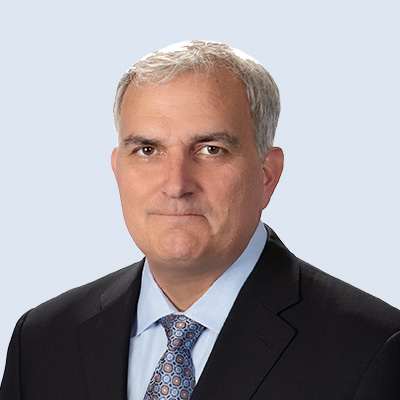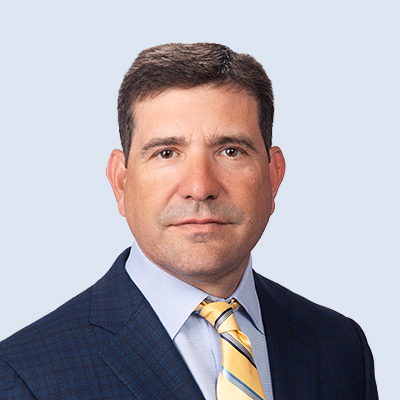Doug Beveridge: Hello and thank you for joining us today, I’m pleased to once again be joined by my friend and fellow healthcare practice leader Craig Ackerman discuss some of the latest trends that matter in healthcare. So welcome, Craig. Nice to see you.
Craig Ackerman: Good seeing you, Doug.
Doug Beveridge: All right, Craig. So again, we recently polled one hundred positions to better understand expectations and trends, especially in light of the Delta variant disruption we’ve been seeing and hearing from about with our clients. So, you know, thinking about patient volumes, let’s start there. So heading into 2022, what are physicians saying about patient volumes? What do they expect?
Craig Ackerman: The good news is patient volumes continue to improve. We haven’t gotten back to where we were pre-COVID within the healthcare system. So physicians estimate that about 90 percent of the patient volume. The good news is that’s going to get up to one hundred and five hundred and ten percent by the end of next year. So in 2022, we expect to see patient volumes exceeding pre-COVID levels, which is great for everyone in the industry.
Doug Beveridge: So naturally, our clients’ reps are going to be anxious to get back in there to say patients are coming back, reps want to come back, what a physician is saying about rep access and what they’re expecting around in-person versus virtual and what that might look like next year.
Craig Ackerman: So physicians are saying rep access is getting better. One thing we do know it is not going back to pre-COVID levels. Eighty percent of physicians basically say their communication preferences have changed because of COVID. So what does that mean? Virtual is here to stay. So the good news is access is coming back. The bad news is it’s not coming back to the same levels that we had pre-COVID.
Doug Beveridge: Yeah. So that’s going to it’s going to cause some changes, I’m sure. Commercial models change and rule changes and just new capabilities, I suspect. Now we just had another one of our recent roundtables or we had 100 or so corporate leaders kind of discussing some of these results and these issues. One of the things that were most top of mind for folks as we talked to some of these results.
Craig Ackerman: If this has been top of mind, pretty much for the last 18 months, what’s interesting, though, is as COVID thrown us a few more curveballs with the Delta variants, some new items have shown up and we’re a source of a quite a bit of discussion. So. And these all affect the commercial. So supply chain disruptions, they are real. They are here. Everyone is talking about them back orders at all-time highs for many of our clients. So it impacts the commercial model because it’s very difficult to get product and in certain cases, products just sitting on ships waiting to come in the U.S. Along with that, there’s price inflation. So that’s a big topic of discussion and really commercial because commercial is the commercial organizations have to lead the charge and have to convince the customers to increase prices. I think the biggest takeaway is our clients and participants in our VRT, where they can increase prices. They are challenges. The GPO and its contracts have some pretty sticky terms in them, and it’s not as easy as in some other industries because quite frankly, this is across every industry. If you just read the Wall Street Journal on a daily basis, you kind of pick up on these things. Another issue it’s really, really hot topic right now are vaccinations. So many of the healthcare systems are requiring vaccinations, pretty much all of our customers. Universally, the response is if the customer requires it, the reps are going to have to get it.
So the big question is for reps that don’t want to get the vaccine. What are companies going to do? And so it goes really into the third point, which is everyone’s reading about in the popular press, too. It’s interesting all it’s all these trends affect all industries. But the great resignation and we’re not immune to the great resignation as an industry. So and we have this vaccination challenge on our hands. We’re not everyone is willing to get vaccinated, so the requirements may lead to higher turnover among some individuals. On top of that, people are changing jobs quite readily. We thought, based off of analogs, basically the financial crisis and the passage of the Affordable Care Act, we saw turnover stay stubbornly low, especially in sectors like Med device. So turnover historically been 15-20% prior to these events. Guess what? Last summer we saw a turnover dip down to the six to eight percent rate. What are we seeing now? It’s almost doubled in the past three or four months, and it looks like it’s going higher. So not only do we have inflation pressures on the product side, we also have inflation pressures on the employee side and we have high turnover. Guess what happens? Wages go up as well. So we plan on talking about physicians and physician access, and we spend half the time talking about these other issues, which are very germane. They come up in almost every conversation we have.
Doug Beveridge: There’s a lot there. So 2022, while it’s sounding more positive, volume are increasing and people figuring out this new kind of virtual hybrid, whatever it looks like role, but still a lot of change. How should our clients think about this? What are some things they should be thinking about things they should have top of mind heading into 2022?
Craig Ackerman: So virtual and digital, you can’t get away from it. It is not going away. So when you think about it, it doesn’t necessarily need to be transformational change over time. It’ll look like transformational change. But the evolution has to start now and many in the industry face the problem of finance just won’t give you any more money. It’s pretty much unless you have a really good business case or you want to increase your sales number, you usually have a budget to spend. It’s based off of last year, and in some cases there’ll be a small increase over last year. In some cases, it’ll be flat. In other cases, finance may want to drive some declines there because of price concessions. So with this transformation, where you are going to require investment and we’re going to have to find ways to invest this evolution, because if you don’t start now, you will get left behind and be way behind others who put these models in place. And that’s what we’re hearing from the industry. It’s more of an evolution. There’s not a need to just snap change overnight. But when we look back five to seven years to go to market models are going to be very different and it’s going to take us multiple years to get there because we need investments in people, processes and technologies. It’s not an easy shift. It’s actually a fairly transformational shift for the entire industry.
Doug Beveridge: Yeah, and you also have a need to keep hitting your quarterly numbers while you’re making these changes. That’s do I think finance is going to care about. Yes, and it’s tough because finance is used to low travel budgets and low event budgets and not backfilling headcount. That’s there. And now they’re getting hit with all these pressures. I think you’re right. I think they’re definitely going to come calling at some point and say, All right, we need to somehow adjust for this to make up for these changes. So that’s going to be a challenge for sure.
Craig Ackerman: There’s no shortage of challenges or opportunities for commercial leaders these days. The other thing that we saw on our recent data is the expense-revenue ratio for the commercial organization coming into COVID was this is on average, about 14%. It dipped down to 11% in 2020, is projected to be 12%. Our trend line suggests it should only be 13-14%. So we know when finance sees that declining E.R., they like to keep it down, which is going to be for most commercial leaders out there. Finance is going to be trying to hold the line, but we’re going to have to come back. Conferences are a little bit of a I don’t think the spends not going, not going to return it to what it was. Use hybrid events, people. What we hear most often is that money is actually getting shifted to fund the virtual evolution because there is a lot of money spent there. So finance is going to want to try to keep those costs down, will. We’ll get back to where it was. No, because from our numbers and recent survey of physicians, they expect 60% in-person, 40% virtual. It used to be almost 100% in-person.
So probably about 90, depending on how you cut the numbers, their phone calls, texts, emails. So we’ll call it 90. So there won’t be as much travel, but there will be travel teeny. We’ll come back. We expect the ITAR rate ratio to go up. And the other thing is, you know, especially depends on there’s a sector dependency here, but finance has done a pretty good job of driving that down over the last 10 years. So at some point you can underfund an organization and the question is how much more in a rising cost environment can that happen? Our belief is it’s probably about somewhere around where it is today. Below that, and we and we come to that conclusion based on looking across industry and saying, you know what? What’s the expense-to-revenue ratios look like and different types of products and solutions, you know, something that has its fairly, you know, technical products and services to sell tend to have higher expense-to-revenue ratios. Commodity products you could drive down to two three four five percent if you’re selling, if you basically network type business, but most in healthcare don’t have network type businesses, right?
Doug Beveridge: Ok, well, first off, the caveat we love you finance people. If you’re just doing your job, you’re not the bad people.
Craig Ackerman: Commercial folks would just keep spending right. So finance has a very important job to make sure they exist and checks and balances.
Doug Beveridge: All right. Well, hey as always, Craig, great. Thank you everyone for joining us. And if you want to stay involved and interact with this more, head out to the website. You can register for upcoming events. You can participate in our research. It’s kind of always ongoing and we’d love to have you. So please have the website contact us if you need any help. We’re here to help and would love to love to hear from you.



